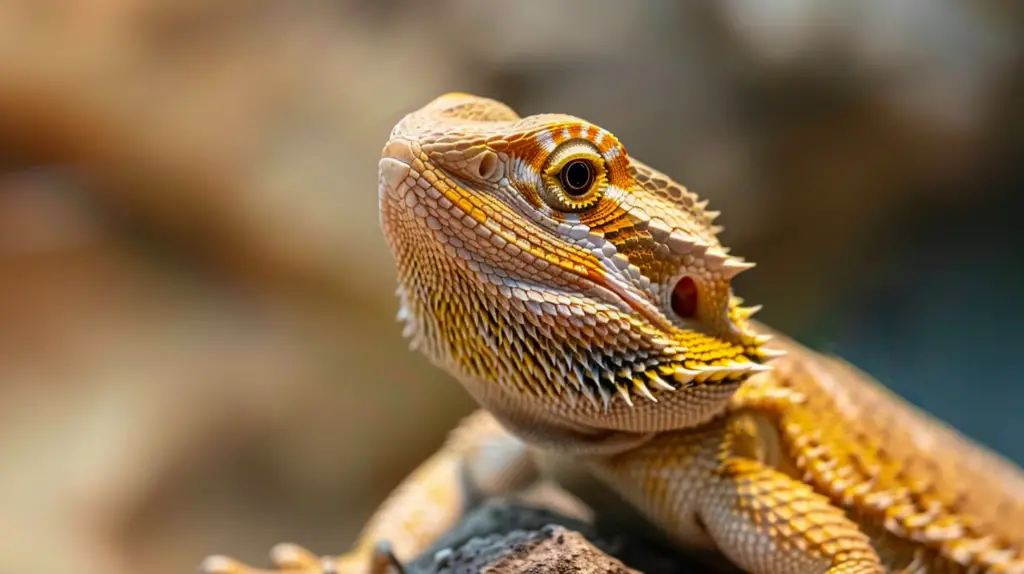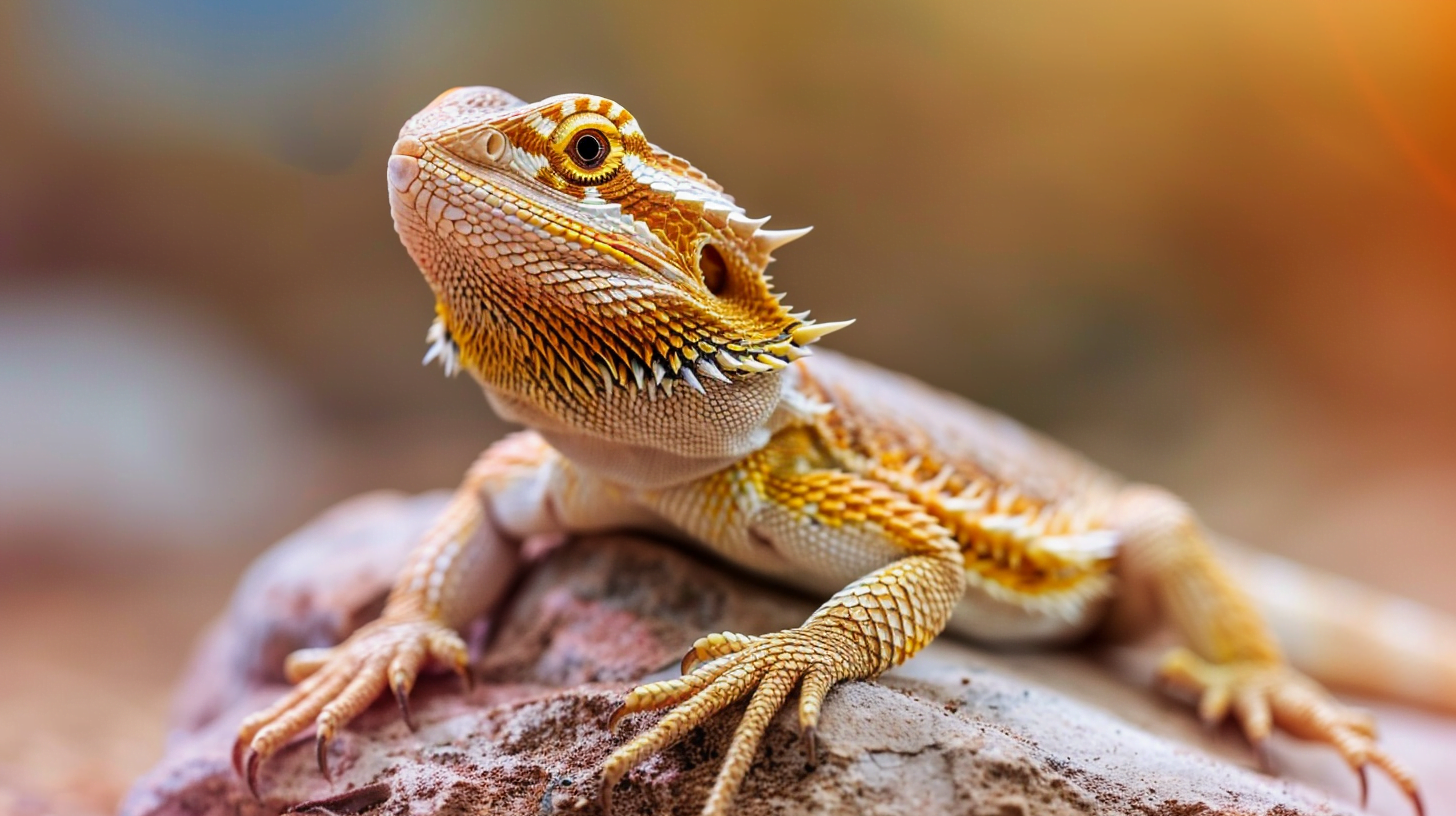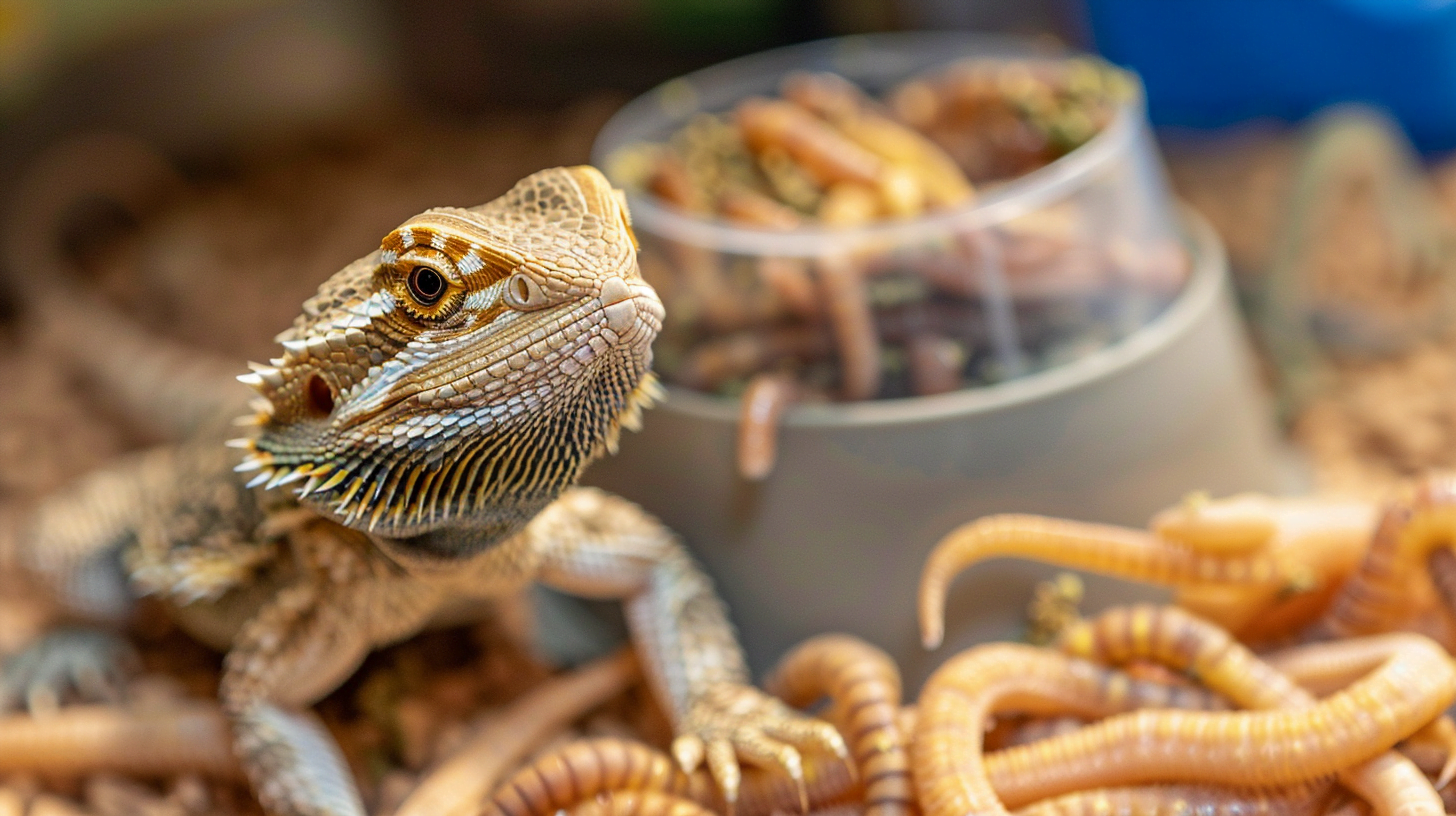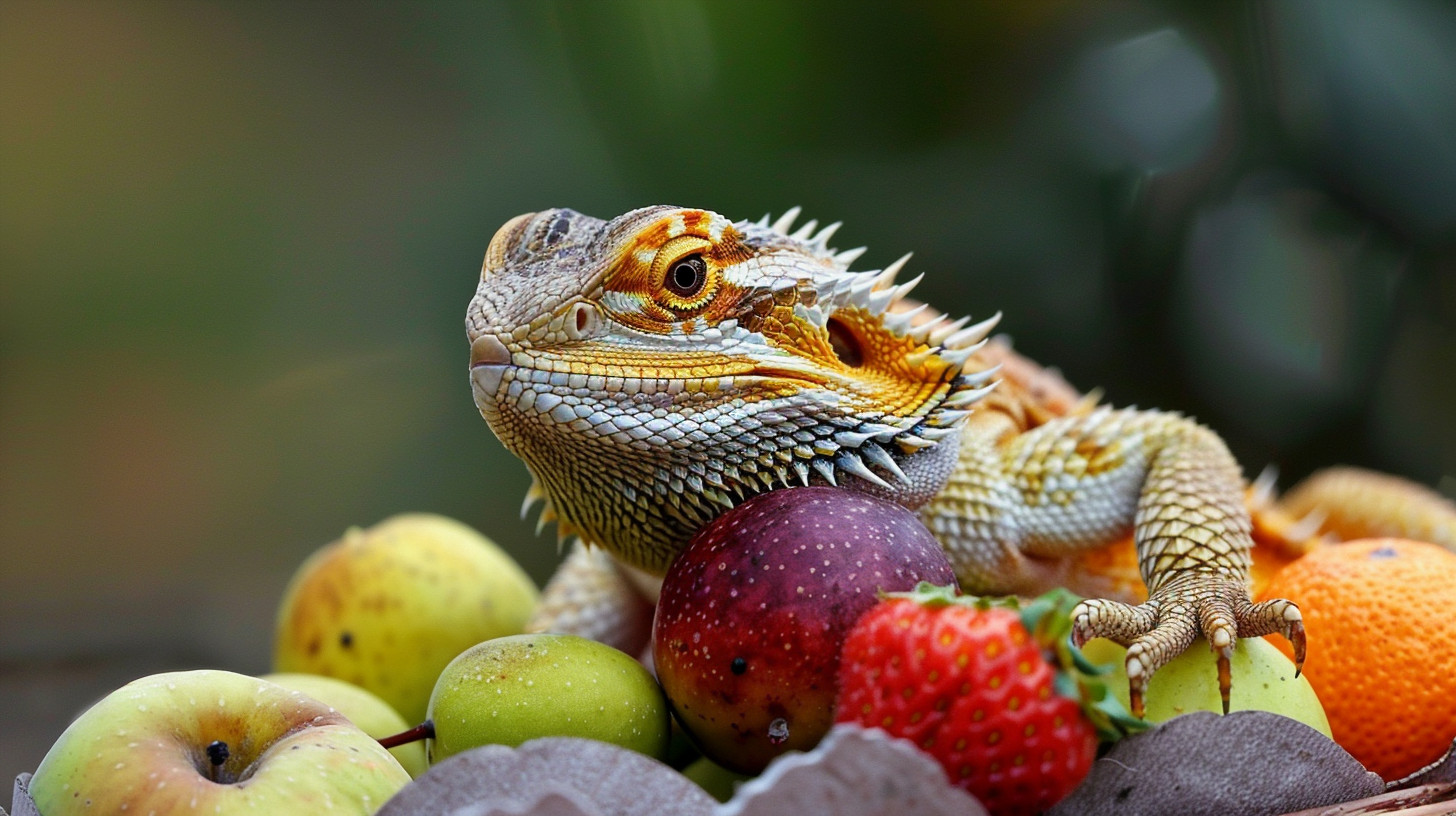Bearded dragons are one of the most popular pet lizards, and with good reason. These docile, friendly reptiles can thrive when cared for properly. Many beginners might be wondering what temperature does a Bearded Dragon need? One of the most critical aspects of bearded dragon husbandry is ensuring their enclosure offers the ideal temperature range. Maintaining the optimal temps enables a bearded dragon to properly regulate its body heat, digest food, and remain healthy and active. But what exactly is the right temperature for a bearded dragon habitat?
Optimal Temperature Range for Bearded Dragons
The optimal temperature zone for a bearded dragon consists of:
- Basking Spot: 100-110°F
- Cool End: 80-90°F
- Nighttime: 75-85°F
Providing this thermal gradient gives the bearded dragon choice over its body temperature. If it gets too warm, it can move to a cooler area.The basking area should be the warmest zone, created by directing a heat lamp over a specific basking site. This allows the bearded dragon to raise its body temperature by sitting under the concentrated heat. Meanwhile, the rest of the habitat should not exceed the temperatures listed for the cool end zone.At night, temperatures can be allowed to drop, but should not go below 75°F, as this can stress their immune system.
Why Temperature Gradients Are Essential
Maintaining a clear temperature gradient is vital because bearded dragons regulate their body heat through a process called thermoregulation. Essentially, if they get too hot or cold, they can move between zones to reach their optimal body temp. Without a choice of temperatures, a bearded dragon cannot effectively thermoregulate.
Monitoring and Regulating Temperatures
To maintain the proper temperature range, regular monitoring and regulating is necessary. The best tools for measuring temps are:
- Digital thermometers with probes
- Infrared temp guns
- Thermostats
Digital thermometers with probes allow 24/7 monitoring and are most accurate for measuring air temps and surface temps inside the enclosure at various locations.Infrared temp guns are ideal for quickly spot-checking basking area temperatures.Thermostats automatically regulate connected heating devices to ensure temperatures do not spike dangerously high or drop too low if the external environment changes.

Consequences of Incorrect Temperatures
Bearded dragons suffer if kept at inappropriate temperatures. Signs they are too hot include:
- Gaping mouth breathing
- Lethargy
- Darkening skin color
Signs they are too cold include:
- Little appetite
- Slow reactions/movements
- Staying curled up
Sustaining incorrect temperatures long-term can cause:
- Respiratory infections
- Heat stroke
- Undigested food
- Behavioral changes
- Organ failure
- Death
Thus, monitoring and regulating temps correctly is critically important.
Temperature Considerations by Age
Ideally, all bearded dragons should be kept within the optimal temp range listed earlier. However, certain age groups have additional considerations:Babies: Cannot efficiently thermoregulate until around 5 months old. Need extra heat, with basking temps of 110-115°F.Adults: Brumation temperature drop can trigger breeding condition and egg development.Seniors: May benefit from slightly higher basking temps to support metabolism.
Heating Equipment for Bearded Dragons
To generate and control temperatures effectively, certain heating products are essential:
- Basking bulbs: Produce concentrated heat beam over a small area. Best options are halogen or ceramic heat emitters.
- Under tank heaters: Sit under one end of tank to create a warmth gradient. Use with thermostat.
- Heat mats: Adhere to the wall of enclosure. Provide isolated heat zone.
- Space heaters: Warm entire room for large enclosures. Use ceramic heat emitters if night heating needed.
- Substrates: Carpet and tile hold heat better than bare glass.
Conclusion
In summary, bearded dragons require a temperature range of 100-110°F at the basking spot, 80-90°F at the cool end, and 75-85°F at night. Careful monitoring and regulating is necessary to maintain this gradient and allow for healthy thermoregulation. Failing to meet their optimal temperature needs can result in illness and potential death. Provide adequate heating equipment tuned to the proper zone temperatures for a thriving bearded dragon.




